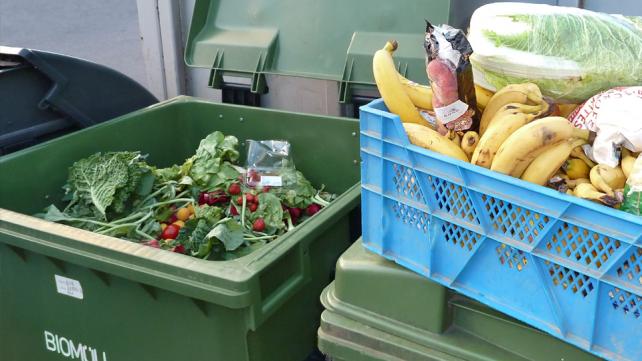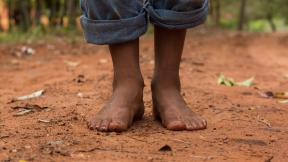
Poverty in America? One of the richest countries in the world?
Yes, poverty is a reality in America, just as it is for millions of other human beings on the planet. According to the US Census Bureau, 35.9 million people live below the poverty line in America, including 12.9 million children.
This is despite abundance of food resources. Almost 100 billion pounds of food is wasted in America each year. 700 million hungry human beings in different parts of the world would have gladly accepted this food.
Here are some statistics on the nature of poverty and the waste of food and money in America.
-In 2004, requests for emergency food assistance increased by an average of 14 percent during the year, according to a 27-city study by the United States Conference of Mayors.
-Also in this study, it was noted that on average, 20 percent of requests for emergency food assistance have gone unmet in 2004.
-According to the Bread for the World Institute 3.5 percent of U.S. households experience hunger. Some people in these households frequently skip meals or eat too little, sometimes going without food for a whole day. 9.6 million people, including 3 million children, live in these homes.
-America's Second Harvest (http://www.secondharvest.org/), the nation's largest network of food banks, reports that 23.3 million people turned to the agencies they serve in 2001, an increase of over 2 million since 1997. Forty percent were from working families.
33 million Americans continue to live in households that did not have an adequate supply of food. Nearly one-third of these households contain adults or children who went hungry at some point in 2000.
U.S. Dept. of Agriculture, March 2002, "Household Food Security in the United States, 2000"
Wasted food in America
-According to America’s Second Harvest, over 41 billion pounds of food have been wasted this year.
-According to a 2004 study from the University of Arizona (UA) in Tucson, on average, American households waste 14 percent of their food purchases.
Fifteen percent of that includes products still within their expiration date but never opened. Timothy Jones, an anthropologist at the UA Bureau of Applied Research in Anthropology who led the study, estimates an average family of four currently tosses out $590 per year, just in meat, fruits, vegetables and grain products.
Nationwide, Jones says, household food waste alone adds up to $43 billion, making it a serious economic problem.
- Official surveys indicate that every year more than 350 billion pounds of edible food is available for human consumption in the United States. Of that total, nearly 100 billion pounds - including fresh vegetables, fruits, milk, and grain products - are lost to waste by retailers, restaurants, and consumers.
-“U.S.-Massive Food Waste & Hunger Side by Side” by Haider Rizvi
-According to a 1997 study by US Department of Agriculture's Economic Research Service (ERS) entitled "Estimating and Addressing America's Food Losses", about 96 billion pounds of food, or more than a quarter of the 356 billion pounds of edible food available for human consumption in the United States, was lost to human use by food retailers, consumers, and foodservice establishments in 1995.
Fresh fruits and vegetables, fluid milk, grain products, and sweeteners (mostly sugar and high-fructose corn syrup) accounted for two-thirds of the losses. 16 billion pounds of milk and 14 billion pounds of grain products are also included in this loss.
Food that could have gone to millions
According to the US Department of Agriculture, up to one-fifth of America's food goes to waste each year, with an estimated 130 pounds of food per person ending up in landfills. The annual value of this lost food is estimated at around $31 billion But the real story is that roughly 49 million people could have been fed by those lost resources. (For your persona jihad against wastage, see A Citizen's Guide to Food Recovery
(The figures below are 1998 figures)
- Proportion of Americans living below the poverty level: 12.7 percent (34.5 million people)
- The average poverty threshold for a family of four: $16,660 in annual income
- The average poverty threshold for a family ofthree: $13,003 in annual income
- Poverty rate for metropolitan areas: 12.3 percent
- Poverty rate forthose living inside central cities: 18.5 percent
- Poverty rate for those living in the suburbs: 8.7 percent
- Percentage and number of poor children: 18.9 percent (13.5 million)
- Children make up 39 percent of the poor and 26 percent of the total population.
- The poverty rate for children is higher than for any other age group.
Child poverty:
- -for children under age 6 living in families with a female householder and no husband present: 54.8 percent
- -for children under age 6 in married-couple families: 10.1 percent
- Poverty rate for African Americans: 26.1 percent
- Poverty rate for Asians and Pacific Islanders: 12.5 percent
- Poverty rate for Hispanics of any race: 25.6 percent
- Poverty rate fornon-Hispanic whites: 8.2 percent
Photo Attribution: http://commons.wikimedia.org/wiki/File:Recovering_wasted_food.JPG








Comments
this is a good article very informative
Location
I am a single 42 year old woman who is too disabled too work but not "disabled" enough for benefits. I can't get any help. It's crossed my mind to go out and get pregnant (I am not going too) so that I could get foodstamps and healthcare. This country rewards out of wedlock pregnancies but doesn't help those of us who could use it.
Location
This Article just shows that, before we go help other countries, we need to help ourselves. How are we able to support other countries with poverty if we can't even help ours? Lets get a strong base, then go out to other countries.
Location
This article was good and it pointed out some things we need to work on as a country. The United States sends out millions of dollars to help tragedies in other countries while we let a lot of the tragedies at home slide by. Sure some people abuse what we give them in WIC and Welfare therefore making us give it to people we suspect will abuse it and most of the time they are the wrong people. We allow this to go on, little children in need of food while we go and rescue the world's children. I argue that we should equal out our time and funds in both aspects. I do believe we have some starving people who are better off then some of the healthiest kids in Africa but we still have kids who are very sick and need our help, kids who eat off the streets just like in third world countries. We need to help poverty at home and elsewhere, not concentrated in certain spots. Even the richest countries have their poor parts. So I believe this article assess one issue but fails to bring up the other issue.
Location
it was great
Location
I'm from Asia. Working & built the America Dream. When you standing in the grocery line, some use the food stamp card with a ton of processed items, then some items are not cover with it. They pulled out a greenbacks to pay it. My cart are so little with health unprocessed items with little spending. Are you sure they are poor or your statical poor ? They have to provide foods for real hunger, not stupid support with blind eyes & dumb static datas.sorry for my poor garammar..
Location
I have lived in Africa for almost 2 years. Coming back to the states made me realize how wasteful my fellow Americans were.
Location
Mr. Clean is completely correct. I am actually using this article to make that very point in my essay. Americans need help. However, people that have the money to help choose to use it helping other countries while thier very own neighbors suffer. It all starts at home.
Location
Mr.clean you make a useless, baseless point.what are you doing?
Location
This article does a good job at pointing out what we already know and most of us have experienced. The real issue here is why theres no article comparing how much we as a country donate to others while we lie still in ruin. Face it, rich people only give when it is popular or benefits them. Angelina Jolie would never give an american child a dime, but give her the opportunity to do it on television for a foreign nation noone really gives a crap about and she will give endless millions. endless millions that me and you as americans gave her.
Location
Pages
Add new comment